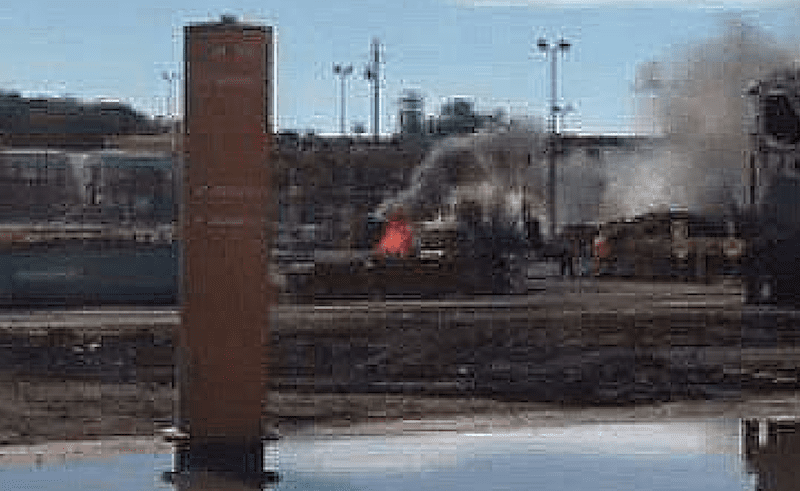The NSW Resources Regulator has released a report on a serious refuelling incident that resulted in significant burns to a mineworker. The incident resulted when high flow diesel was pumped into a Hyster tyre handler fuel tank without an effective coupling.
On 10 August 2017, a 29-year-old contract worker suffered serious burns to his face, neck, torso and arms when a fire started while he was refuelling a diesel-powered tyre handler at Mt Arthur Coal’s heavy vehicle refuelling facility.
The worker had driven the tyre handler about 260 metres from a tyre-fitting bay to the refuelling station at 9.36 am. The refuelling hoses at the refuelling station were fitted with quick connect (dry break) couplings, but the tyre handler’s fuel tank was not.
The worker attached a free flow adapter nozzle to an 800 litre per minute refuelling hose, and in doing so defeated several safety controls in the quick connect system. The adapter did not positively connect to the tyre handler’s fuel tank and did not have the capability to automatically stop the flow of diesel when the tank was full.
The worker placed the adapter into the filling neck of the tyre handler and opened the refuelling nozzle handle. He went to a switch room shed about 4 metres from the fuel tank of the tyre handler. He activated controls on the fuelling system’s switchboard that caused diesel to begin flowing at an increasing rate. As the worker returned to the tyre handler, the forces acting upon the adapter caused it to eject from the filling neck.
Diesel was flowing at a rate of 400 litres a minute at this point. The worker attempted to control the fuel hose, but the forces that were acting upon it made this task very difficult.
Diesel flowed at a high rate onto the tyre handler’s engine cover and splashed back onto the worker. The rate of the diesel flow peaked at 791 litres a minute.
Diesel entered the tyre handler’s engine bay and ignited on a hot engine surface in the vicinity of its turbocharger. The flame extended out towards the worker, igniting his clothing, head, arms and body. The worker extinguished the fire on his body by removing his shirt, running to a nearby drain and covering his affected body parts in mud.
While this was occurring, fire spread through the engine area of the tyre handler, the surrounding pad of the refuelling station and into the switch room shed. Water carts and rescue teams were able to extinguish the fire. The injured worker sustained burns to 8% of his total body surface area, which included full thickness burns to 5% of his total body surface area.
These injuries required extensive treatment including skin grafts.
The incident highlights the inherent risks in refuelling when positive connections to refuelling are not made. A refuelling incident could take a life. Our readers are advised to check the effectiveness of refuelling systems at their sites particularly where high flow diesel is delivered with ineffective couplings.
You can read the full report on the NSW Resources Regulators site here
Read More Mining Safety News














Add Comment